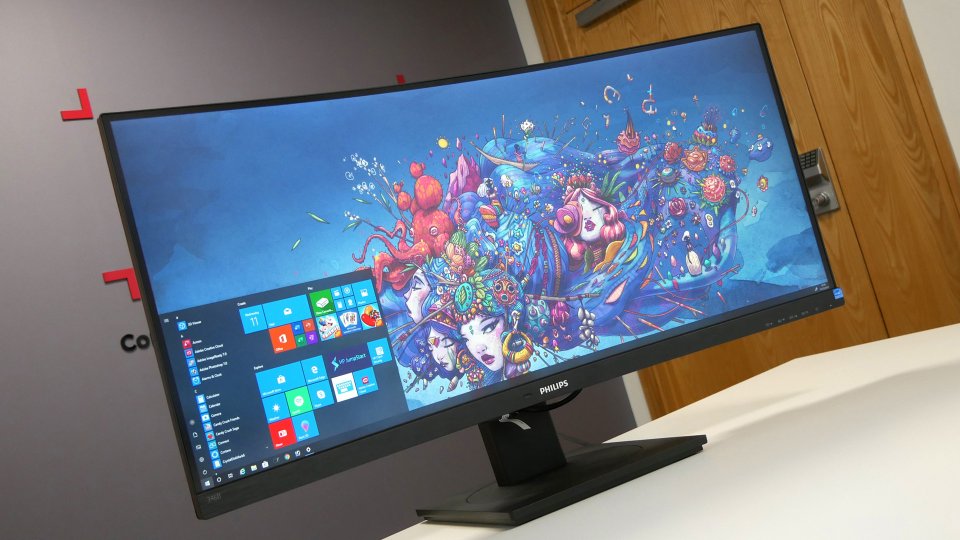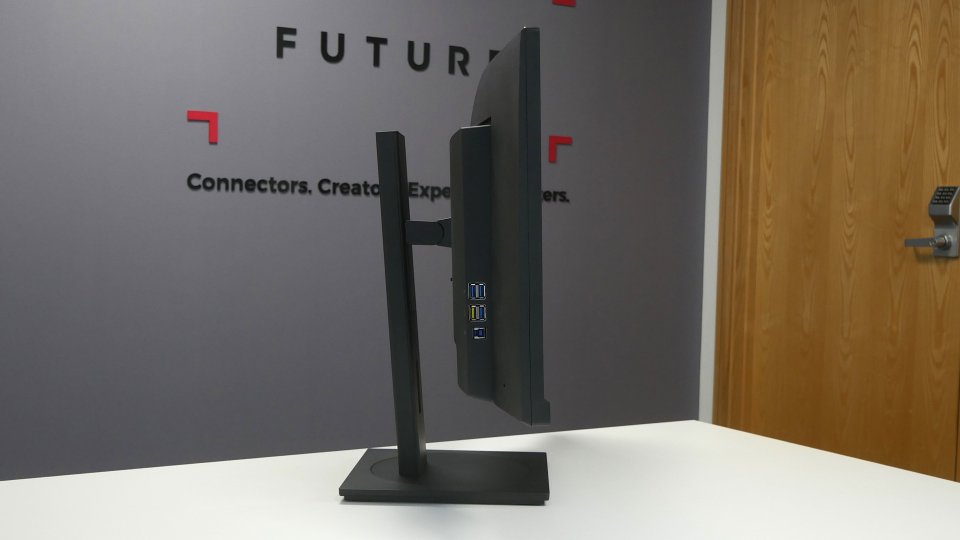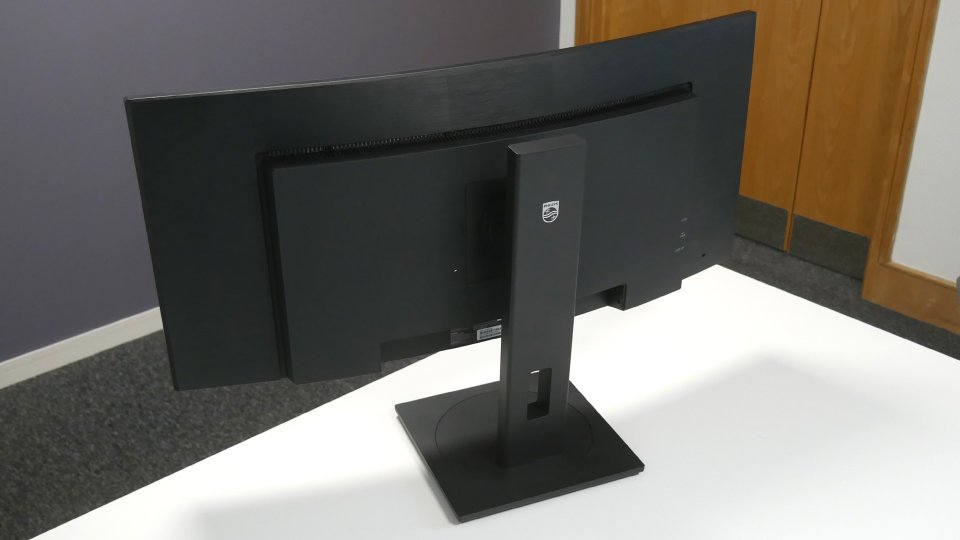TechRadar Verdict
Philips’ new 34-inch ultrawide monitor makes for a strong all-round 34-inch productivity panel, albeit at a fairly stiff price
Pros
- +
Wide aspect is great for productivity
- +
USB-C with 90W charging
- +
High quality chassis
Cons
- -
Mediocre resolution and pixel density
- -
Middling image quality
- -
Quite expensive
Why you can trust TechRadar
Professional displays are synonymous with content creation. That, of course, is a relatively narrow remit. There’s also a need for displays that fill a broader workplace role, which is where Philips’ new 346B1C slots right in.
It’s a high quality 34-inch ultrawide curved display, but it doesn’t promise the earth in terms of colour accuracy and gamut support. Instead, it majors on features that aid productivity in a more general sense. Part of that is inherent in the 34-inch wide-aspect panel, which is ideal for viewing multiple documents and applications in parallel.
Value: 3
Overall: 4.5
Design: 5
Features: 4
Performance: 4
Usability: 5
To that core attribute, the new 346B1C adds extras like full USB Type-C connectivity for slick single-cable connectivity, a KVM switch and support for up to 100Hz refresh. On paper, it’s a very nice package for all-round productivity.

Price and availability
Currently, the Philips 346B1C can be had for $479 on Amazon in the USA while the UK recommended price is £539. That’s somewhat anomalous given existing exchange rates, but the 346B1C has only just hit the market, so we’d expect the pricing to shift to more closely reflect the exchange rate in fairly short order. Either way, it’s a fairly expensive unit, albeit with several desirable features that go some way to justifying the price.

Design and features
For pure aesthetics, the new Philips 346B1C pretty much nails the pro remit. It’s all black and all business, but slick with it and both classy and expensive looking. It also feels very nicely made and the stand is both extremely stable and offers tilt, height and swivel adjustment. It’s very much the quality bit of hardware you’d be justified in expecting at this price point.
As for the display itself, the core specs involve a 34-inch 21:9 aspect panel with the obligatory (for this form factor) 3,440 by 1,440 native resolution. Dig a little deeper into the spec list and you’ll find that the 346B1C doesn;t make dramatic promises when it comes to colour accuracy. It covers 90 per cent of the Adobe RGB gamut, for instance. That’s not bad, but displays aimed at content creators typically do better, many achieving fully 100 per cent support. Likewise, it’s notable that Philips doesn’t quote a figure for the DCI-P3 space at all.
Panel size 34-inch
Panel type VA
Resolution 3,440 x 1,440
Brightness 300cd/m2
Contrast 3,000:1
Pixel response 5ms
Refresh rate 100Hz
Vesa 100x100mm
Inputs DisplayPort, HDMI, USB-C
Indeed, the 346B1C uses VA rather than the IPS panel technology preferred for the most colour accurate monitors. However, it’s the broader feature set that makes this an intriguing display. For starters, it has a full support for USB Type-C connectivity including up to 90W of charging power. That means you can drive this monitor, charge your laptop and connect peripherals, all with a single cable.
Sign up to the TechRadar Pro newsletter to get all the top news, opinion, features and guidance your business needs to succeed!
The 346B1C also packs a KVM switch with an easy-access button so you can use dual PCs with this single display. As for other major features, it supports up to 100Hz refresh. That isn’t a feature that’s typically associated with productivity. But the implied responsiveness is always welcome. For the record, it also supports adaptive refresh. Finally, Philips has bundled a full set of cables, including USB-C.

Performance
The pros and cons of this format of display are well known. The 21:9 aspect ratio is absolutely superb, for instance, for viewing multiple documents or web pages in parallel. Three lined up side by side is eminently practical, for instance.
Less of an obvious win is the 3,440 by 1,440 native resolution. Compared to modern smartphones and laptops, the subsequent 110PPI pixel density is pretty poor. Indeed, next to, say, a 27-inch 4K monitor with a pixel density of around 154PPI, it’s a long way off the pace. The 346B1C is thus far from the sharpest option at this price point. Fonts are not nearly as crisp as a comparable 4K monitor, nor can you view 4K content in full. Some may find the 1,440 vertical pixels a little restrictive, too. But let’s not get carried away. It’s still quite a few pixels and the display delivers lots of desktop real estate to work with by most standards.

As for the Philips 346B1C’s basic image quality, decent but unspectacular pretty much sums it up. Given modest 300cd/m2 brightness spec, we weren’t expecting a zinger. So it proves. In fact, even going by the quoted specifications the 346B1C is a little dull and lacking in vibrancy. Certainly, if you’re expecting the sort of highly saturated colours that are typically a VA panel signature, you’ll be a little disappointed.
That said, given the productivity remit, eye-searing brightness is hardly optimal. Moreover, the factory calibration is good, with little to no evidence of compression in any of out test scales. You can pretty much unbox, fire up and get to work. Backing that notion up, Philips includes a calibration report with each monitor.

Philips 346B1C, of course, is also curved with a 1500R radius. How well you get on with a curved display is very much a personal preference thing. But curved certainly isn’t automatically a bad thing for productivity. Try before you buy is the best advice on that subject.
Finally, regarding the 100Hz refresh, it’s hardly essential for productivity. But it does give a tangibly more responsive feel than standard 60Hz displays. It’s a nice little extra rather than a killer feature.

Verdict
Overall, the new Philips 346B1C ticks an awful lot of boxes. As a daily driver in a work and productivity context, most users will be very happy. It’s a very nice monitor with which to view multiple applications and documents in parallel. There’s lots of working space, a good quality panel and a strong feature set. Most useful of all is the full USB-C docking functionality, though for some the KVM switch may be a killer feature.
It’s also a quality bit of kit that will look great in pretty much any working environment. That said, the most demanding users will arguably find the resolution a little low on a panel of this size. Certainly, if you are a crisp font aficionado, 346B1C’s 110PPI pixel density is disappointing.
Arguably, then, it all comes down to value. The UK price is currently a little toppy. You are paying for some features, such as the curved panel and 100Hz refresh, that have somewhat limited benefits in a productivity context.
Some users will prefer to spend this budget on a conventional 4K monitor in the 27 to 32-inch range. However, the Philips 346B1C is brand new on the market and we suspect the price will come down gradually in the coming months. With a little downwards adjustment, it will be a compelling proposition. Even as it is, it’s worth a spot on your shortlist.
You might also want to check out our Philips 245B1 monitor review.
Technology and cars. Increasingly the twain shall meet. Which is handy, because Jeremy (Twitter) is addicted to both. Long-time tech journalist, former editor of iCar magazine and incumbent car guru for T3 magazine, Jeremy reckons in-car technology is about to go thermonuclear. No, not exploding cars. That would be silly. And dangerous. But rather an explosive period of unprecedented innovation. Enjoy the ride.

